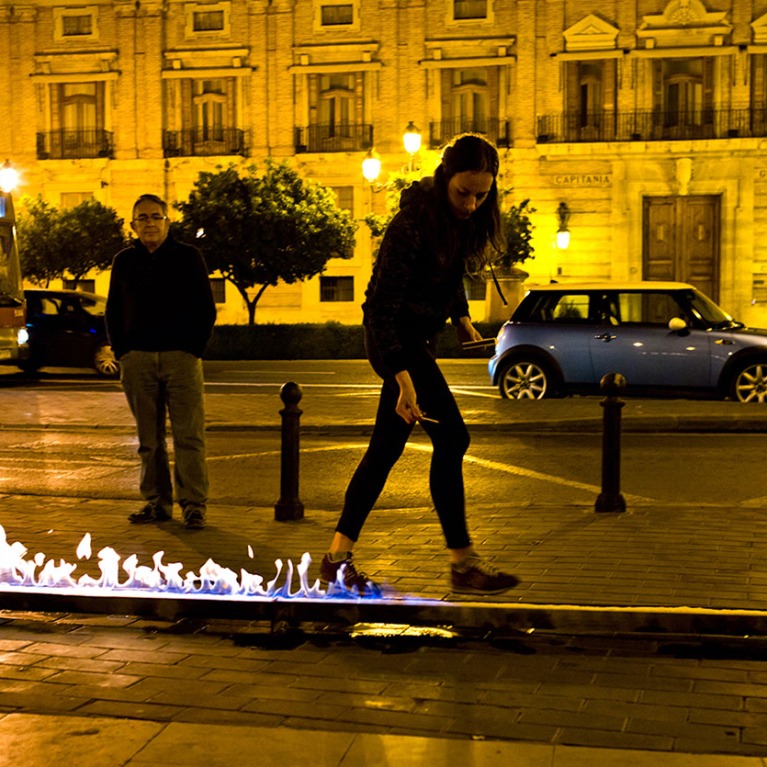To carry this policy out, huge cultural containers like the IVAM (Valencian Institute of Modern Art), and the City of Arts and Sciences were built, and many important events, like the World Art Encounters and the Biennial of Valencia were organized. In these events the grandiloquence and spectacularity of culture itself was of the utmost importance. This policy was carried out without any concern to create a local cultural infrastructure which would be capable of maintaining the high cost of these projects.
Description of the project by Domingo Mestre
When the real estate bubble burst, financial cutbacks in culture left the Valencian institutions with hardly any budget. The old medieval downtown neighbourhood, one of the biggest in Europe was abandoned, becoming a victim of the advanced processes of gentrification which had caused the expulsion of the local population without an effective repopulation.
It is in this depressing context that the Intramurs festival emerged in 2014 in order to fill the streets of the old city with art and provide an alternative to the crisis which faced the ostensible failure of cultural policies created exclusively for a tourist monoculture. In this second edition of the festival, a huge group of artists and cultural workers have occupied the streets and the squares, the dividing walls, the balconies, the plots and all kinds of underused spaces of the city with unprecedented activity, offering a multitude of artistic proposals ranging from performance to graffiti, music to sound art, poetry, dance, fashion and window-dressing or the many activities for children Mini Intramurs and several forums where urban art, education, neighborhoods and even criminal legislation were discussed.
Everything was done colaboratively, gathering a little bit from here and a little bit from there, reinventing our own form of community self management in order to be able to organize over six hundred events, in hundreds of different places, without any public subsidies- beyond the cooperation of the Council that covered the cost of posters and maps as well as providing the necessary licenses.
Amongst all the activities that took place, deserving of a special mention are the inaugural performance by Jaime Vallaure, which made us reflect about the simultaneously protective and repressive character of the city walls and the monumental intervention by Monique Bastiaans in the Plaza de la Virgen, a participative installation which can be considered the first secular intervention in this religious square. Also worth mentioning were the installation of a collection of anarchist flags in Calle Caballeros by Democracia, the monumental mural for change by Boa Mistura, Mmmm's intervention which blocked off a street with a subtle membrane, Graham Bell Tornado´s Queer Pink Park or Trashformaciones' sculptures in the Plaza Tetuán.
In this location Laura Cazzaniga's action that lit a line of fire opposite the Military Captaincy also took place accompanying Massimo Mazzone's poetical tribute to the heroic Columna de Hierro of the Spanish Civil War. An emotive exercise of libertarian memory as part of the festival section "Art against the Ley Mordaza" set up to collectively explore the recent limits imposed upon urban art by the new Law of Civil Safety Protection, an excessive legislative brought in by the Spanish Government which has even been criticised by the United Nations.

































